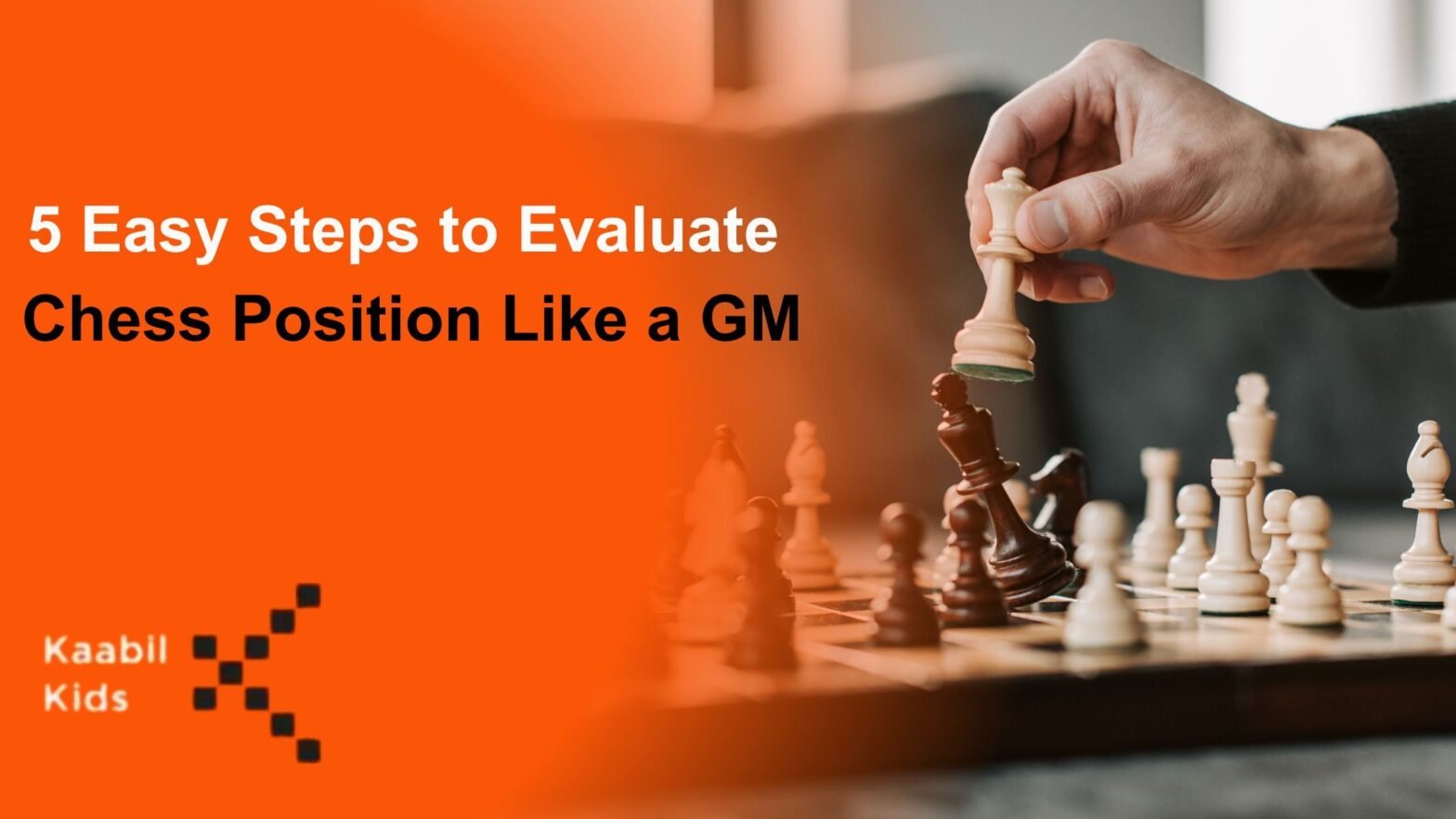Chess is a game of complex game board strategy, careful preparation, and deep comprehension. Effectively assessing a chess situation is a talent that sets grandmasters apart. Whether you’re a novice or an experienced player, you may significantly improve your game by assuming the mindset of a Grandmaster (GM). In order to provide readers with the essential information in chess coaching classes that drives strategic decision-making, we will outline five simple methods in this article that anybody can use to assess chess situations as if they were grandmasters.
1. Evaluate King Safety and Material Balance
The material on the board and the safety of both kings are the first things to consider while analyzing a chess situation. A GM quickly gauges the relative value of the pieces, considering the total points for each side. Additionally, they evaluate the safety of the kings, identifying potential weaknesses in the pawn structure or any exposed vulnerabilities.
| Pro Tip: Focus on maintaining a balance between material gains and king safety. A well-protected king and strategic pawn structure often outweigh a temporary material advantage. |
2. Examine Pawn Structure and Central Control
Analyzing the pawn structure and central control is an important part of assessing a situation. GMs focus on pawn formations, looking for strengths and weaknesses that might affect the outcome of the game. Establishing control of the board’s center is essential for setting the game’s speed and flow.
| Pro Tip: To maintain central control, strive for a robust pawn arrangement. Utilize pawn breaks strategically to undermine your opponent’s structure while fortifying your own. |
3. Evaluate Piece Activity and Coordination
The activity and coordination of your pieces play a crucial role in determining the overall strength of your position. GMs prioritize piece harmony, ensuring that each piece contributes effectively to the overall strategy. An active and coordinated set of pieces can control key squares, launch attacks, and respond to threats more efficiently.
| Pro Tip: Assess the placement of each piece and strive for optimal coordination. Aim to develop your pieces harmoniously, avoiding unnecessary pawn moves in the opening that may hinder their activity. |
4. Consider Long-Term Plans and Imbalances
Grandmasters are renowned for their capacity for long-term planning and strategic thought. When evaluating a position, one must look for imbalances that may be taken advantage of to get a desired result. Inequalities in pawn structure, piece activity, and king safety are included in this. GMs create strategies that take advantage of these disparities to get a competitive edge.
| Pro Tip: Identify imbalances unique to the position and formulate long-term plans based on these. Whether it’s exploiting a weak square or targeting an isolated pawn, a well-thought-out plan can guide your moves. |
5. Factor in Time Management and Clock Pressure
Time management is a crucial component in analyzing a chess situation in practical play. GMs take into account the clock situation in addition to the player’s location on the board. Stress of time may cause errors or mistakes, therefore it might be a tactical benefit to evaluate how well your opponent manages their time.
| Pro Tip: Try to strike a balance between clock management and position analysis. Keep an eye on your opponent’s time and apply pressure in difficult scenarios by using the clock as a tool. |
Chess Coaching Courses: Developing Your Assessment Capabilities
While comprehending these five processes is essential, you may go much more quickly forward by obtaining useful insights and individualized coaching. Chess coaching sessions provide an organized setting where players of all skill levels may hone their craft under the direction of knowledgeable instructors.
Why Take Classes for Chess Coaching?
Personalized Feedback: You will get feedback in a coaching lesson that is specific to your playing style and areas that need work. Coaches are able to see trends in your play and provide specific guidance to improve your assessment abilities.
Strategic Instruction: Coaches share strategic insights, opening theories, and endgame techniques that align with your playing level. This strategic instruction goes beyond generic advice, providing you with a deeper understanding of positional play.
Interactive Learning: Chess coaching classes often involve interactive sessions, where you can engage in discussions, analyze games, and ask questions. This interactive learning environment fosters a deeper understanding of the game.
Tactical Training: Coaches can guide you through tactical exercises and help you develop a keen eye for combinations and tactical patterns. This training is invaluable for enhancing your ability to spot tactical opportunities in a position.
Game Analysis: In chess coaching classes, your games are analyzed by experienced coaches. This analysis helps you understand your strengths, weaknesses, and areas for improvement, contributing to overall skill development.
Conclusion
Like Evaluating a Chess Position as Grandmaster is a craftsmanship that can be developed with practice, creative thinking and continual study. The five-step programme provides a framework for assessing positions accurately. However, if you want your kids to learn the game properly and hence do well at it, you can take online chess coaching classes for children.


